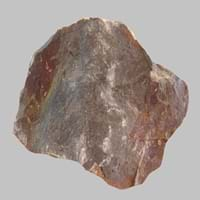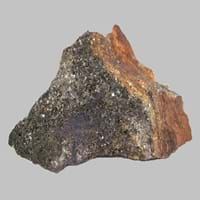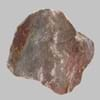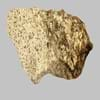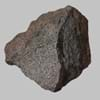Definition
Hawaiite is volcanic rock that resembles basalt. It is an olivine basalt with intermediate composition between alkali olivine and mugearite
Hornfels is a metamorphic rock formed by the contact between mudstone or other clay rich rock, and a hot igneous body, and represents a heat altered equivalent of the original rock
Origin
Hawaii Islands
New Zealand
Discoverer
Joseph Iddings
Unknown
Etymology
From Hawaii Islands
From German which means hornstone
Class
Igneous Rocks
Metamorphic Rocks
Sub-Class
Durable Rock, Medium Hardness Rock
Durable Rock, Soft Rock
Group
Volcanic
Not Applicable
Other Categories
Opaque Rock
Fine Grained Rock, Opaque Rock
Texture
Glassy, Massive, Porphyritic, Scoriaceous, Vesicular
Granular, Platy
Color
Black, Brown, Light to Dark Grey
Brown, Dark Greenish - Grey, Green, Reddish Brown
Durability
Durable
Durable
Appearance
Dull and Soft
Dull
Interior Uses
Decorative Aggregates, Floor Tiles, Flooring, Homes, Hotels, Interior Decoration, Kitchens
Decorative Aggregates, Flooring, Homes, Interior Decoration
Exterior Uses
As Building Stone, As Facing Stone, Paving Stone, Garden Decoration, Office Buildings
As Building Stone, As Facing Stone, Garden Decoration, Office Buildings, Paving Stone
Other Architectural Uses
Curbing
Curbing
Construction Industry
As Dimension Stone, Cobblestones, Rail Track Ballast, Roadstone
for Road Aggregate, Roadstone
Medical Industry
Not Yet Used
Not Yet Used
Antiquity Uses
Artifacts
Artifacts, Monuments
Commercial Uses
Creating Artwork, Sea Defence
Cemetery Markers, Commemorative Tablets, Creating Artwork
Types
Not Available
Biotite hornfels
Features
Has High structural resistance against erosion and climate, Very fine grained rock
Smooth to touch
Archaeological Significance
Famous Monuments
Easter Island in the Polynesian Triangle, Pacific Ocean
Data Not Available
Sculpture
Not Yet Used
Not Yet Used
Famous Sculptures
Not Applicable
Not Applicable
Figurines
Not Yet Used
Not Yet Used
Formation
Hawaiite is a fine-grained, hard rock that forms when bits of lava shoot out of volcanoes and reach the Earth's surface.
Due to change in environmental conditions, rocks are heated and pressurized deep inside the Earth's surface. Hornfels is formed from the extreme heat caused by magma or by the intense collisions and friction of tectonic plates.
Mineral Content
Olivine, Plagioclase, Pyroxene
Andalusite
Compound Content
Aluminium Oxide, CaO, Iron(III) Oxide, FeO, Potassium Oxide, MgO, MnO, Sodium Oxide, Phosphorus Pentoxide, Silicon Dioxide, Titanium Dioxide
Fe, Mg
Types of Metamorphism
Impact Metamorphism
Not Applicable
Types of Weathering
Biological Weathering
Biological Weathering
Types of Erosion
Not Applicable
Chemical Erosion, Glacier Erosion, Sea Erosion, Water Erosion, Wind Erosion
Grain Size
Not Applicable
Fine Grained
Fracture
Conchoidal
Conchoidal
Streak
Not Available
Unknown
Porosity
Less Porous
Highly Porous
Luster
Not Available
Shiny
Cleavage
Not Applicable
Perfect
Toughness
Not Available
Not Yet Found
Specific Gravity
Not Available
3.4-3.9
Transparency
Opaque
Opaque
Density
Not Available
0.25-0.30 g/cm3
Specific Heat Capacity
Not Available
Resistance
Heat Resistant, Pressure Resistant, Wear Resistant
Heat Resistant, Impact Resistant, Pressure Resistant
Deposits in Eastern Continents
Asia
India, Russia
Bangladesh, Bhutan, China, India, North Korea, Qatar, Russia, Saudi Arabia, South Korea, Thailand
Africa
South Africa
Cameroon, East Africa, Tanzania, Western Africa
Europe
Iceland
United Kingdom
Others
Hawaii Islands
Not Yet Found
Deposits in Western Continents
North America
Canada, USA
Canada, USA
South America
Brazil
Bolivia, Brazil, Colombia, Ecuador
Deposits in Oceania Continent
Australia
Not Yet Found
New South Wales, New Zealand, Queensland, Western Australia
All about Hawaiite and Hornfels Properties
Know all about Hawaiite and Hornfels properties here. All properties of rocks are important as they define the type of rock and its application. Hawaiite belongs to Igneous Rocks while Hornfels belongs to Metamorphic Rocks.Texture of Hawaiite is Glassy, Massive, Porphyritic, Scoriaceous, Vesicular whereas that of Hornfels is Granular, Platy. Hawaiite appears Dull and Soft and Hornfels appears Dull. The luster of Hawaiite is not available while that of Hornfels is shiny. Hawaiite is available in black, brown, light to dark grey colors whereas Hornfels is available in brown, dark greenish - grey, green, reddish brown colors. The commercial uses of Hawaiite are creating artwork, sea defence and that of Hornfels are cemetery markers, commemorative tablets, creating artwork.
